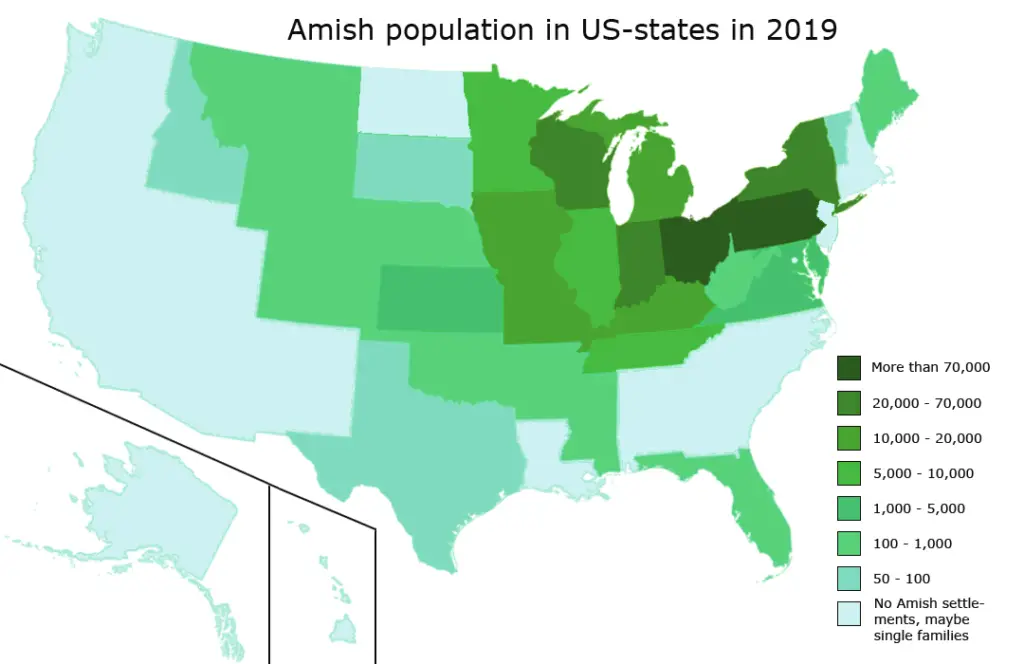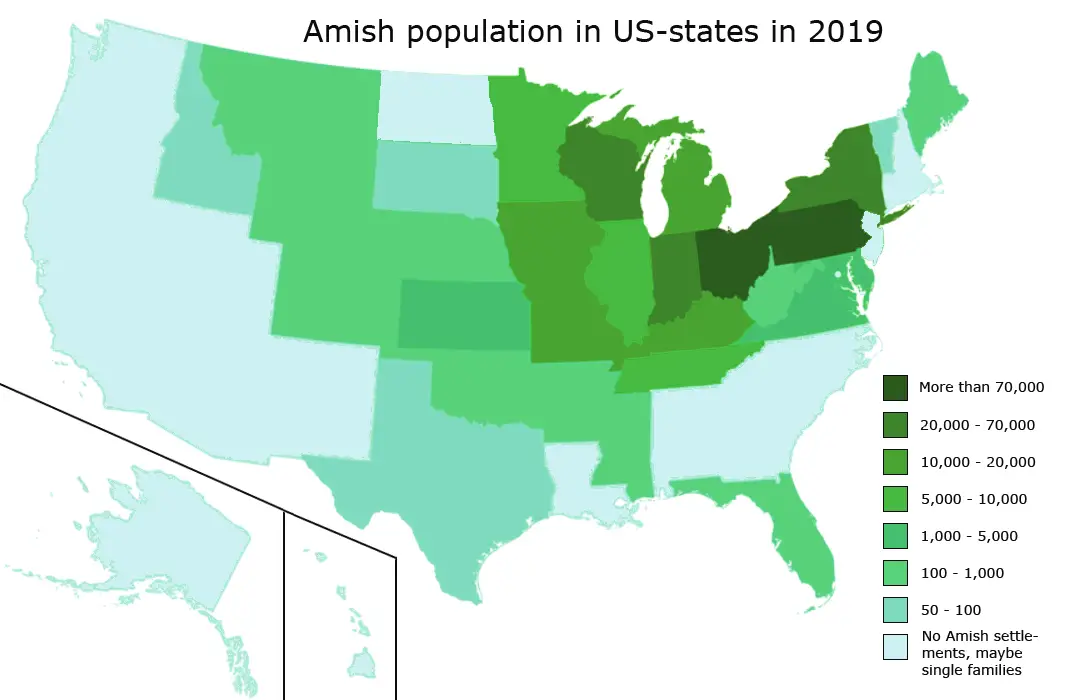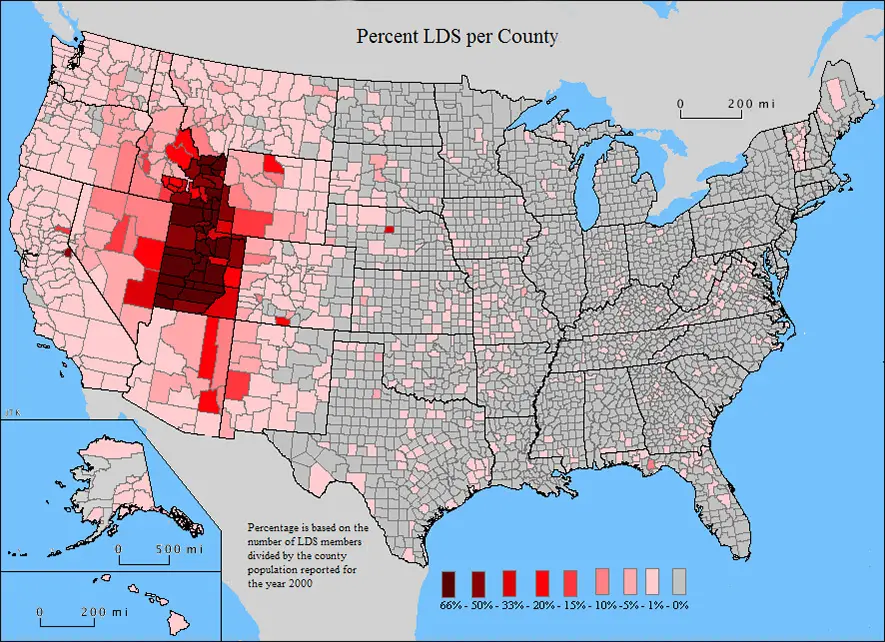The Amish in America: A Unique Cultural Landscape on the United States Map
When we examine a United States map, we often focus on political boundaries or geographical features. However, there’s a fascinating cultural landscape that’s not immediately visible: the distribution of Amish communities across America. These communities, with their distinctive way of life, offer a unique perspective on our nation’s diversity.
The Amish story in America began in the early 18th century when many families immigrated to Pennsylvania seeking religious freedom. But their history stretches back even further to 1693 in Switzerland, where Jakob Ammann led a schism within the Swiss and Alsatian Anabaptist movement. Ammann’s followers became known as the Amish, a group distinct from but closely related to Mennonite churches.
Today, if you were to plot Amish settlements on a United States map, you’d find communities in 31 states and even four Canadian provinces. Surprisingly, Amish communities have also been established as far away as Argentina and Bolivia, showcasing the group’s global reach.
What makes the Amish stand out in modern America is their commitment to a simpler way of life. Driving through Amish country, you’ll see horse-drawn buggies instead of cars, farmhouses lit by kerosene lamps rather than electricity, and fields worked with traditional methods instead of modern machinery. This isn’t just about rejecting technology; it’s a deliberate choice to prioritize faith, family, and community over the trappings of modern life.
Amish clothing is perhaps their most visible distinguishing feature. Men typically wear dark suits, straight-cut coats, and wide-brimmed hats, while women don plain dresses in solid colors, often complemented with bonnets and aprons. This simple attire reflects their values of modesty and humility.
The Amish way of life has fascinated many Americans and even inspired several famous individuals with Amish roots. For instance, the acclaimed author Beverly Lewis, known for her novels set in Amish communities, was raised in Pennsylvania Dutch country and had an Amish maternal grandmother. Her work has helped many outsiders understand and appreciate Amish culture.
Looking at population trends on our United States map, we see remarkable growth in the Amish community. In 2000, there were over 165,000 Amish in the U.S. By 2010, this number had grown to 249,000, and today, it exceeds 370,000. This rapid growth, approximately 3% annually, is largely due to large family sizes (averaging seven children per family) and an impressive church-member retention rate of around 80%.
The distribution of Amish populations across the United States is far from uniform. About two-thirds of all Amish live in just three states: Pennsylvania, Ohio, and Indiana. Pennsylvania leads with over 76,000 Amish residents spread across 56 settlements and 514 churches. Ohio follows closely with nearly 76,000 Amish in 62 settlements and 574 churches, while Indiana is home to almost 55,000 Amish in 24 settlements and 392 churches.

Recent trends show an increasing movement westward, with new Amish settlements being established in states like Wisconsin, Missouri, and Kentucky. This expansion is partly due to the search for affordable farmland and less populated areas, reflecting the Amish adaptability despite their traditional lifestyle.
At the heart of Amish life is the concept of “Gelassenheit” – submission to God’s will. This principle guides their separation from the outside world, their pacifism, and their approach to education. Amish children typically attend school only through the eighth grade, focusing on practical skills and religious education. Many Amish also speak Pennsylvania Dutch, a dialect of German, as their first language, with English as a second language.
One of the most intriguing Amish traditions is Rumspringa, a period in adolescence where some Amish youth experience greater freedom before deciding to be baptized into the church. This practice allows young people to experience the outside world before committing to the Amish way of life, contributing to the high retention rate within the community.
The Amish are also known for their strong sense of community, exemplified by traditions like barn raisings, where the entire community comes together to build a barn for a family in need. This spirit of mutual aid and cooperation extends to all aspects of Amish life, governed by an unwritten set of rules called the Ordnung, which varies slightly from community to community.
Looking to the future, demographic projections suggest continued rapid growth of the Amish population. If current trends persist, the Amish could number over 1 million by 2050, potentially redrawing the cultural landscape on our United States map. However, the community also faces challenges, such as increasing land prices in traditional settlement areas pushing younger generations to seek non-agricultural occupations.
The Amish story is a fascinating chapter in American history, one that continues to evolve. As we look at the United States map, we’re reminded of the diverse cultural tapestry that makes up our nation, with the Amish representing a unique thread in this complex weave. Their ability to maintain their traditions while adapting to changing circumstances offers valuable insights into the nature of cultural preservation in our rapidly changing world.
For those interested in learning more about the Amish and their unique place in American culture, I recommend “The Riddle of Amish Culture” by Donald B. Kraybill and “The Amish” by Donald B. Kraybill, Karen M. Johnson-Weiner, and Steven M. Nolt. These books offer deep insights into Amish life and history.
The Amish remind us that there are many ways to live and thrive in America. Their communities, dotted across our nation’s landscape, stand as a testament to the diversity and resilience that have always been hallmarks of the American experience.








